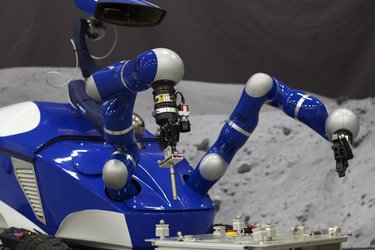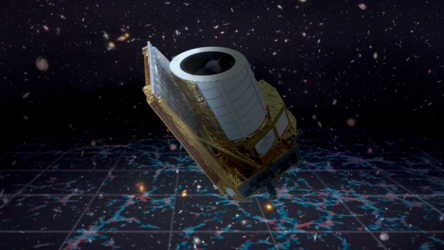Accept all cookies Accept only essential cookies See our Cookie Notice

About ESA
The European Space Agency (ESA) is Europe’s gateway to space. Its mission is to shape the development of Europe’s space capability and ensure that investment in space continues to deliver benefits to the citizens of Europe and the world.
Highlights
ESA - United space in Europe
This is ESA ESA facts Member States & Cooperating States Funding Director General Top management For Member State Delegations European vision European Space Policy ESA & EU Responsibility & Sustainability Annual Report Calendar of meetings Corporate newsEstablishments & sites
ESA Headquarters ESA ESTEC ESA ESOC ESA ESRIN ESA EAC ESA ESAC Europe's Spaceport ESA ESEC ESA ECSAT Brussels Office Washington OfficeWorking with ESA
Business with ESA ESA Commercialisation Gateway Law at ESA Careers Cyber resilience at ESA IT at ESA Newsroom Partnerships Merchandising Licence Education Open Space Innovation Platform Integrity and Reporting Administrative Tribunal Health and SafetyMore about ESA
History ESA Historical Archives Exhibitions Publications Art & Culture ESA Merchandise Kids Diversity ESA Brand Centre ESA ChampionsLatest
Space in Member States
Find out more about space activities in our 23 Member States, and understand how ESA works together with their national agencies, institutions and organisations.
Science & Exploration
Exploring our Solar System and unlocking the secrets of the Universe
Go to topicAstronauts
Missions
Juice Euclid Webb Solar Orbiter BepiColombo Gaia ExoMars Cheops Exoplanet missions More missionsActivities
International Space Station Orion service module Gateway Concordia Caves & Pangaea BenefitsLatest
Space Safety
Protecting life and infrastructure on Earth and in orbit
Go to topicAsteroids
Asteroids and Planetary Defence Asteroid danger explained Flyeye telescope: asteroid detection Hera mission: asteroid deflection Near-Earth Object Coordination CentreSpace junk
About space debris Space debris by the numbers Space Environment Report In space refuelling, refurbishing and removingSafety from space
Clean Space ecodesign Zero Debris Technologies Space for Earth Supporting Sustainable DevelopmentLatest
Applications
Using space to benefit citizens and meet future challenges on Earth
Go to topicObserving the Earth
Observing the Earth Future EO Copernicus Meteorology Space for our climate Satellite missionsCommercialisation
ESA Commercialisation Gateway Open Space Innovation Platform Business Incubation ESA Space SolutionsLatest
Enabling & Support
Making space accessible and developing the technologies for the future
Go to topicBuilding missions
Space Engineering and Technology Test centre Laboratories Concurrent Design Facility Preparing for the future Shaping the Future Discovery and Preparation Advanced Concepts TeamSpace transportation
Space Transportation Ariane Vega Space Rider Future space transportation Boost! Europe's Spaceport Launches from Europe's Spaceport from 2012Latest

Robo-centaur at Open Day
Thank you for liking
You have already liked this page, you can only like it once!
Visitors to the ESA Technical Centre’s Open Day came face to face with a centaur as they toured the telerobotics laboratory.
Equipped with 4x4 wheels and a pair of fully mobile robot arms, each fitted with grippers and a camera, this still-to-be-finished Interact Robot Centaur is designed for remote operation by astronauts aboard the International Space Station.
It will be put to use in the ‘Interact’ demonstration next year. The aim is to simulate the way a Mars rover might one day be remotely controlled by a crew orbiting the Red Planet.
Mars is much too far for direct remote control from Earth, but flying astronauts around the planet would overcome the problem of time delay, extending human intelligence and intuition to planetary exploration without the danger and expense of landing.
The outdoor test campaign is due to take place next year, using a control system already aboard the Station for the lab’s Haptics-1 experiment to assess the use of force-feedback in weightlessness.
A wearable control exoskeleton can also be seen on the right side of the picture.
Established in 2009 at ESA’s technical heart in Noordwijk, the Netherlands, ESA’s Telerobotics & Haptics Lab is developing technologies for advanced human-machine interaction, extending the human sense of touch to space and planetary environments.
The laboratory is leading the Interact experiment with the support of the Technical University of Delft, in particular with the Delft Robotics Institute and its D: DREAM (Dream Realisation of Extremely Advanced Machines) Hall.
-
CREDIT
ESA – S. Ferreté Aymerich -
LICENCE
ESA Standard Licence

The Interact Centaur Rover

The Interact Centaur Rover

The Interact Centaur Rover

The Interact Centaur Rover















 Germany
Germany
 Austria
Austria
 Belgium
Belgium
 Denmark
Denmark
 Spain
Spain
 Estonia
Estonia
 Finland
Finland
 France
France
 Greece
Greece
 Hungary
Hungary
 Ireland
Ireland
 Italy
Italy
 Luxembourg
Luxembourg
 Norway
Norway
 The Netherlands
The Netherlands
 Poland
Poland
 Portugal
Portugal
 Czechia
Czechia
 Romania
Romania
 United Kingdom
United Kingdom
 Slovenia
Slovenia
 Sweden
Sweden
 Switzerland
Switzerland
























